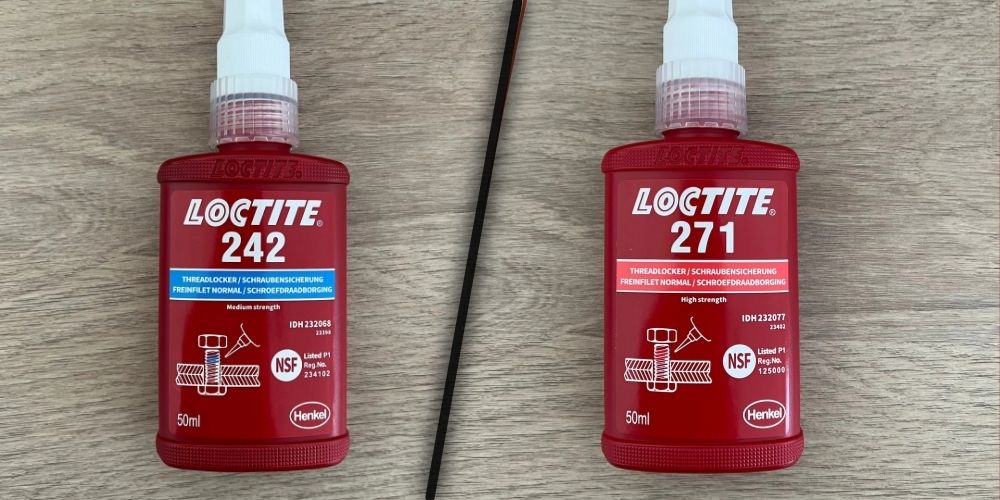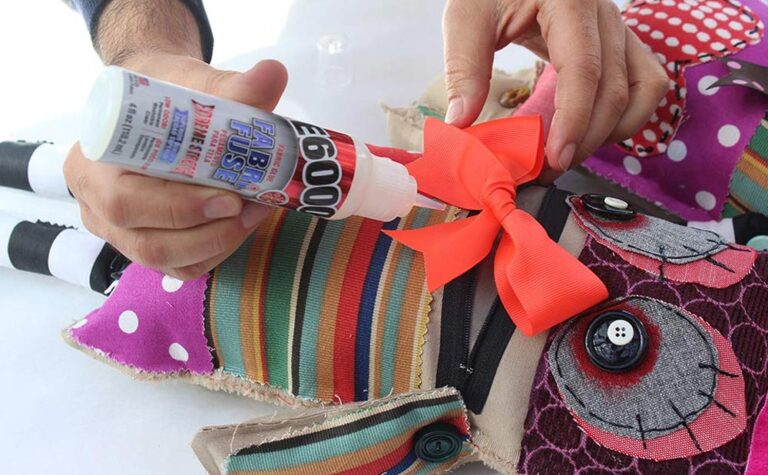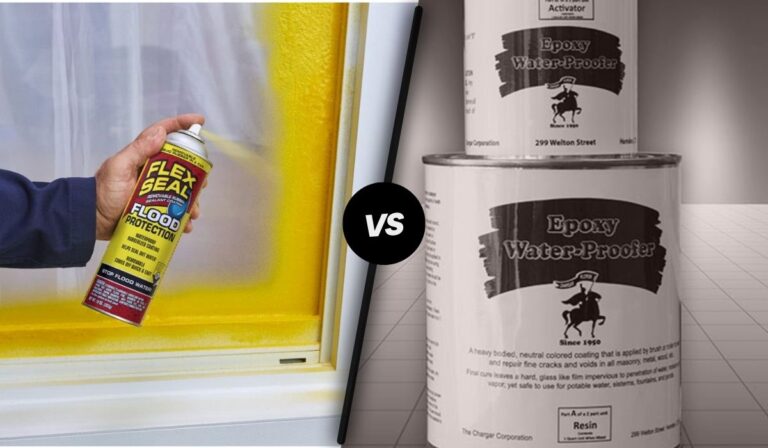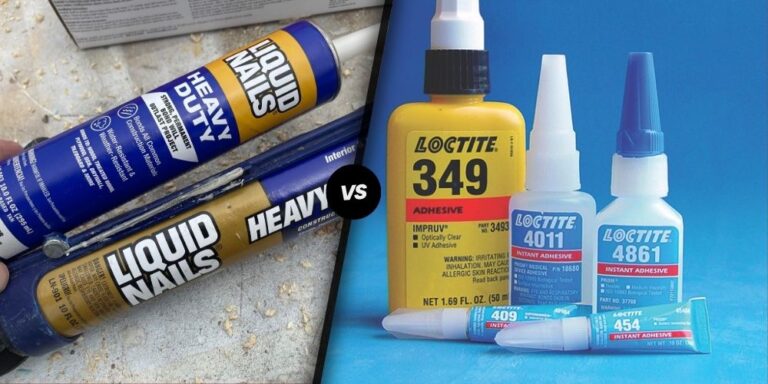Loctite 242 vs. 271: Understanding Strength Levels
Understanding Loctite 242 vs 271
Loctite 242 Overview
Loctite® 242 is recognized as a medium-strength threadlocker that doesn’t require heat for disassembly on fasteners ranging from ¼” to ¾” (6mm to 22mm). This makes it suitable for applications that demand easier service and maintenance. Available in both liquid and semi-solid stick forms, Loctite 242 offers versatility for various uses.
- Adhesion Strength: Medium
- Disassembly Method: High torque or special chemicals
- Cure Time: 24 hours
| Property | Description |
|---|---|
| Adhesion Strength | Medium |
| Disassembly Method | High torque or special chemicals |
| Fastener Range | ¼” to ¾” (6mm to 22mm) |
| Cure Time | 24 hours |
| Application Forms | Liquid, Semi-Solid Stick |
Full details can be found on the Henkel Adhesives site.
Loctite 271 Overview
Loctite® 271 is a high-strength threadlocker designed for the permanent locking and sealing of threaded fasteners. It cures when confined between close-fitting metal surfaces and can only be removed by heating parts up to 500°F (260°C). Recommended for metal fasteners up to 1” (25 mm) in diameter, this product is ideal for bolts on decks, ready-to-assemble furniture, mounts, and gear bolts.
- Adhesion Strength: High
- Disassembly Method: Requires localized heat (>550°F/260°C) and hand tools
- Fastener Range: ¼” to ¾” (6mm to 22mm)
| Property | Description |
|---|---|
| Adhesion Strength | High |
| Disassembly Method | Localized heat (>550°F/260°C), Hand tools |
| Fastener Range | ¼” to ¾” (6mm to 22mm) |
| Application Forms | Liquid |
More information is available on the Henkel Adhesives site and SPS Webstore.
For further comparison of Loctite products, you may also like our articles on loctite 242 vs. 262, loctite 242 vs. 243, and loctite 262 vs. 263 vs. 271.
Application and Strength
When comparing Loctite 242 vs. 271, understanding their application areas and strength levels is essential. These details help determine which product is more suitable for specific tasks.
Loctite 242 Application Areas
Loctite Threadlocker Blue 242 is a medium strength threadlocker designed for applications requiring normal disassembly with standard hand tools. This makes it ideal for use on metal fasteners ranging from 1/4” (6 mm) to 3/4” (19 mm) in diameter on components that need easy servicing and maintenance.
Common applications for Loctite 242 include:
- Bolts on small engines.
- Swing sets.
- Furniture assembly.
It provides sufficient holding strength to secure fasteners while allowing for future disassembly without the need for excessive force or heat. It’s important to note that it comes in both liquid and semi-solid stick forms for diverse application methods (Henkel Adhesives).
| Fastener Diameter | Application Examples | Loctite 242 Strength |
|---|---|---|
| 1/4” to 3/4” | Small engines, furniture | Medium |
Loctite 271 Application Areas
Loctite Threadlocker Red 271 is a high-strength threadlocker, designed for the permanent locking and sealing of threaded fasteners. This product cures when confined between close-fitting metal surfaces and is recommended for use on metal fasteners up to 1″ (25 mm) in diameter.
Common applications for Loctite 271 include:
- Bolts on decks.
- Ready-to-assemble furniture.
- Gear bolts and mounts.
Due to its high-strength formulation, disassembly requires localized heating of the parts to temperatures above 500°F (260°C), followed by removal with hand tools while still hot. This makes it suitable for applications where fasteners are intended to stay put permanently (Henkel Adhesives).
| Fastener Diameter | Application Examples | Loctite 271 Strength |
|---|---|---|
| Up to 1” | Deck bolts, gear mounts, furniture | High |
By understanding the specific application areas and strength levels of Loctite 242 and 271, one can make an informed choice based on their project needs. For further comparisons on adhesive strengths and features, visit our articles on loctite 242 vs. 243 or loctite 262 vs. 263 vs. 271.
Removal Process
Disassembly is a crucial aspect when considering the use of threadlockers like Loctite 242 and Loctite 271. Each has specific characteristics that influence how they can be disassembled.
Loctite 242 Disassembly
Loctite® 242 is classified as a medium-strength threadlocker that doesn’t require heat for disassembly. This makes it suitable for applications where regular maintenance and adjustments are necessary. The removal process involves using standard hand tools such as wrenches or screwdrivers. Given its medium strength, Loctite 242 allows for easier service, enabling maintenance tasks to be performed without excessive effort.
| Attribute | Loctite 242 |
|---|---|
| Application Strength | Medium |
| Removal Method | Standard Hand Tools |
| Heat Required | No |
For more information on various threadlockers, check out our article on loctite 242 vs. 243.
Loctite 271 Disassembly
Loctite® 271 is designed for high-strength applications, providing a more robust locking mechanism. This high-strength classification implies that removing components bonded with Loctite 271 can be more challenging. The most effective way to disassemble parts bonded with Loctite 271 is to apply localized heat. Heating the bonded area to a temperature above 500°F (260°C) weakens the adhesive bond, allowing the parts to be separated (Henkel Adhesives).
| Attribute | Loctite 271 |
|---|---|
| Application Strength | High |
| Removal Method | Localized Heat (>500°F/260°C) |
| Heat Required | Yes |
For further comparisons and options, visit our articles on loctite 262 vs. 263 vs. 271 and loctite 270 vs. 271.
Both Loctite 242 and Loctite 271 offer strong bonding capabilities, but their ease of disassembly makes them suitable for different contexts. Choosing the appropriate threadlocker depends on the necessity for routine maintenance and the required strength of the bond. For other glue comparisons, including those involving specific applications, check out our comprehensive guide on leak lock vs. loctite.
Curing Time and Heat Resistance
When choosing between Loctite 242 and 271, understanding their curing time and heat resistance is crucial. Each type serves different application needs based on these properties.
Loctite 242 Cure Time
Loctite 242 is a medium strength oil-tolerant threadlocker designed for applications that might require future disassembly with standard tools. It typically cures within 24 hours at room temperature (Tameson). Cure time can be affected by the material, temperature, and humidity conditions.
| Property | Loctite 242 |
|---|---|
| Cure Time | 24 hours |
| Functional Cure Time | 6-8 hours |
| Full Cure Time | 24 hours |
| Optimal Temperature Range | -65°F to 300°F (-54°C to 149°C) |
Loctite 242 offers reliable performance for applications that need secure fastener locking without permanent adhesion. For more information on different medium strength threadlockers, visit our page on loctite 242 vs. 243.
Loctite 271 Cure Time
Loctite 271 is a high-strength threadlocker used for maximum locking applications that typically do not require disassembly. It cures faster than Loctite 242, often reaching functional strength within 1-3 hours, with full curing taking up to 24 hours under optimal conditions (LOCTITE).
| Property | Loctite 271 |
|---|---|
| Cure Time | 24 hours |
| Functional Cure Time | 1-3 hours |
| Full Cure Time | 24 hours |
| Optimal Temperature Range | -65°F to 300°F (-54°C to 149°C) |
Loctite 271 is ideal for high-stress applications where permanent adhesion is preferred. For comparison with other high-strength threadlockers, check out our article on loctite 262 vs. 263 vs. 271.
Understanding the differences in cure times and heat resistance between Loctite 242 and 271 helps ensure the right product is selected for the specific needs of a project. For more information on Loctite threadlockers, explore comparisons like loctite 242 vs. 262 and loctite 270 vs. 271.
Strength Comparison
Loctite 242 Strength Level
Loctite 242 is a blue threadlocker that offers medium adhesion strength. It’s designed for fasteners ranging from ¼” to ¾” (6mm to 22mm). This medium-strength adhesive is oil-tolerant and ideal for situations requiring occasional maintenance and disassembly. Fasteners treated with Loctite 242 can generally be disassembled with hand tools and do not require heat for removal (Henkel Adhesives).
Here is a breakdown of the key properties of Loctite 242:
| Property | Description |
|---|---|
| Strength | Medium |
| Cure Time | 24 hours |
| Color | Blue |
| Removal | High torque or special chemicals/heat |
| Fastener Size | ¼” to ¾” (6mm to 22mm) |
For more detailed comparisons, visit our articles on loctite 242 vs. 243 and loctite 242 vs. 262.
Loctite 271 Strength Level
Loctite 271 is a red threadlocker that offers high adhesion strength, designed for maximum locking applications. This high-strength adhesive is also formulated for fasteners from ¼” to ¾” (6mm to 22mm). Disassembly of fasteners treated with Loctite 271 typically requires localized heat of over 550°F (260°C), followed by disassembly with hand tools while still hot (Henkel Adhesives).
Here is a breakdown of the key properties of Loctite 271:
| Property | Description |
|---|---|
| Strength | High |
| Cure Time | 24 hours |
| Color | Red |
| Removal | Requires heat or special chemicals |
| Fastener Size | ¼” to ¾” (6mm to 22mm) |
For further comparisons, check out loctite 262 vs. 271 and loctite 277 vs. 271.
Both Loctite 242 and 271 are effective threadlockers, with 242 being suitable for applications requiring easier disassembly and 271 for more permanent bonds. These distinctions help in selecting the best threadlocker for your specific needs, whether you need moderate strength with removability or a more permanent, high-strength solution.
Specialty Loctite Variants
When comparing Loctite 242 vs. 271, it is important to explore the various specialty variants available to determine the best fit for specific applications. This section provides insights into different Loctite strength colors and specialized Loctite products designed for specific uses.
Different Loctite Strength Colors
Loctite threadlockers are available in a variety of colors, each associated with a different strength level and disassembly difficulty. Understanding these color codes ensures that the correct threadlocker is selected for the desired application.
| Color | Loctite Number | Strength Level | Disassembly Method |
|---|---|---|---|
| Purple | Loctite 222 | Low Strength | Standard hand tools |
| Blue | Loctite 242, 243, 248 | Medium Strength | Hand tools with high torque or special chemicals/heat |
| Green | Loctite 270, 290 | High Strength | Special heat or chemicals |
| Red | Loctite 271 | Permanent | Heating parts up to 500°F (260°C) |
-
Purple Loctite Threadlocker: Provides low adhesion strength, making it suitable for fasteners that require occasional disassembly. It cures in 24 hours. (Tameson)
-
Blue Loctite Threadlocker: Offers medium adhesion strength, making it suitable for applications that require frequent disassembly with the aid of hand tools or chemicals/heat. This category includes Loctite 242, Loctite 243, and Loctite 248, all curing in 24 hours. (Tameson)
-
Green Loctite Threadlocker: Ideal for preassembled fasteners. This option offers high strength and often requires heat or specific chemicals for disassembly. Common versions are Loctite 270 and Loctite 290, curing in 24 hours. (Tameson)
-
Red Loctite Threadlocker: High strength for permanent locking. It requires heating parts up to 500°F (260°C) for disassembly, such as with Loctite 271. (Source)
Specialized Loctite for Specific Applications
Loctite has developed a range of specialized variants tailored for specific applications to provide optimal performance and reliability.
-
Loctite 515 vs. Loctite 518: Used for gasketing applications. Loctite 515 is designed for flexible flanges, while Loctite 518 is suited for rigid flanges, offering better resistance against extreme temperatures and pressures.
-
Loctite 262 vs. 263 vs. 271: High-strength threadlockers. Loctite 262 is ideal for fasteners up to 3/4″ in diameter; Loctite 263 is suited for fasteners up to 1″; and Loctite 271 is designed for permanent locking of large fasteners, requiring high heat for removal.
-
Loctite 242 vs. 262: For applications demanding different strengths. Loctite 242 is used for medium-strength needs, while Loctite 262 is meant for high-strength requirements, making it ideal for larger fasteners and more demanding applications.
By understanding the different Loctite variants and their specific uses, you can better choose the right product for your particular needs. Explore our related articles on leak lock vs. loctite and other comparisons to gain further insights into selecting the best adhesive solutions.







